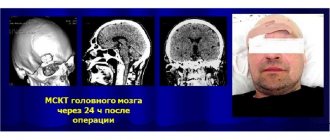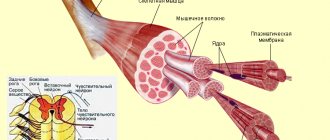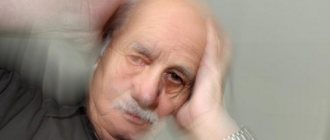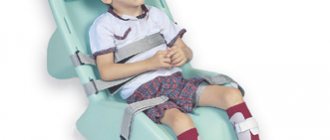Stereotypes (stereotypical actions and obsessive movements) are the constant unreasonable reproduction of phrases, words, actions, which are present in autism spectrum disorder, sensory deprivation, and mental retardation.
The effects of stereotypy can be as simple as swaying from one side to the other or as complex as marching in place over and over again. There are several versions of the origin of the disease. There are also several methods of treating it.
What triggers obsessiveness?
The first signs of the disease manifest themselves in early childhood with frequent seizures. The manifestation of the problem most often occurs in cases of excitement, fear, and anxiety.
A minute of education
The manifestation of stereotypy in children is part of the development of the child himself and his control of his own movements during the process of relieving tension and calming down, obsessive states due to neurosis, lack of concentration, and worries. In a mature person, attacks manifest themselves when there is high emotional stress, for example, stress or a nervous breakdown.
The syndrome of obsessive movements and stereotypical actions can cause mental disorders, disruptions in the functioning of the central nervous system, and they also occur in autistic disorders.
List of diseases that can cause the development of stereotypy:
- Rett syndrome;
- autism;
- Tourette's syndrome;
- neuroacanthocytosis;
- obsessive-compulsive syndrome;
- Lesch-Nyhan syndrome;
- congenital lack of vision and hearing;
- mental retardation.
Stereotypes in children and their types
Stereotypes in children are expressed in different ways. We are not always talking about motor (motor) stimming. There are also speech, behavioral (emotional-affective), sensory, play and object, food, and mental stereotypes. For some, a special attraction to rhythm or an increased desire to organize a stereotypical space around themselves (room furnishings, clothing, shoes, hygiene and body care products, lighting and other parameters) comes to the fore. They may have different modality (direction), but exist together.
Motor (motor) stereotypies
Probably the most abundant group is motor stereotypies in children. What do they look like and what do they mean? This can include rocking the body to stimulate the vestibular system, running without a goal, flapping the arms, circling around one’s axis, walking on tiptoes, jumping in place, snapping fingers and twisting the hands, strange turns of the head, twitching of the shoulders, bending of the fingers and generally complex rotational movements. moving them, clapping your hands, etc. Even in a 1-2 year old child, motor stims can be noted: rocking in a crib/stroller, on children's horses, carousels, a special addiction to swings and all devices that help rotation. With poor sleep and difficulty waking up, children may behave stereotypically to synchronize internal rhythms. For some children, stims remain even in their sleep. This is due to a violation of the cyclic stages of sleep.
The pattern of motor stereotypies is very diverse. Sometimes children show such fluidity and flexibility of their body when performing their ritual that one can be surprised. But these skills cannot be used for learning.
Speech stereotypies
Stereotypic speech activity is expressed in constant repetitions of words, phrases, sentences out of place and without meaning. Many single words are inserted into speech very often, like filler words in the speech of an ordinary person. Children love phrases, quotes, some expressions from advertising, films, cartoons. They often manipulate sounds by singing and stretching them, mixing them with each other.
Echolalia is another feature of speech stereotypies in children. When you ask a child a question, you receive an answer in the form of a repetition of the entire phrase or the last word from it.
Many people have so-called “self-talk”. The child fills his speech with meaningless stereotypical words, sounds, phrases, speaking as if to himself and completely aimlessly. Such speech is filled with the same type of thoughts and completely loses its meaning. It contains a mixture of ordinary language and incomprehensible “bird” language with various onomatopoeias.
Sensory stereotypies
In this modality, there are different types of stims aimed at stimulating different senses:
- tactile (skin) - stroking different parts of the body, feeling surfaces, separating different fabrics (Anya picks at hair elastic bands and separates them into dozens of thin threads, and does this only with ribbed and soft elastic bands), pouring cereals, sand, and other bulk materials, smearing glue and other substances of different consistencies, sorting through book pages, playing with water;
- visual - rotating fingers and toys or their parts in front of the eyes, watching the play of light and shadows, turning lights/flashlights on and off (Anya still has this in her repertoire, she mostly does this out of boredom), closely watching advertisements, special love of flashing toys and similar hobbies;
- auditory – brings many objects close to the ears and tries to extract sounds, for example, rustling bags, crumpling or tearing a sheet of paper, dropping pencils from a box, scattering a mosaic, knocking toys against each other, swinging creaking door leaves, scratching nails, snapping fingers, etc. .d.;
- olfactory - sniffs various objects and surfaces, people, animals (Anya spent a long time sniffing all the wooden toys);
- gustatory - tastes not only edible things, for example, licks toys, chews pens and pencils, sucks the ends of pillows/blankets/clothes (Anya sucked all these objects. The edges of her jacket collar and hat strings were always wet.), eats sand and plasticine (Anya ate kinetic sand);
- proprioceptive - pinches your ears, strains the muscles of your limbs and the whole body in order to feel your body from a different perspective.
The child strives for those sensations that he lacks most. One person may have stereotypies of different modalities. He is able to gradually expand their set, complicate ritualism, as well as completely abandon the previous ones.
Behavioral stereotypes
In behavior, we can observe the following stereotypes in children: love for the same games, routes, places to walk, products, clothing, personal care products, dishes, home furnishings, books, etc. If there is a violation of the usual way of life, we get hysteria and aggression. Behavioral stereotypies can be expressed in monotonous emotional reactions to similar events or newly appearing people in a child’s life.
Stimming is clearly expressed in gaming activities. Children prefer the same plots, line up and place toys, ornaments, patterns in rows, collect various candy wrappers, buttons and other trinkets. This is an attraction to strict rhythm. Some, on the contrary, create complete chaos in their things in order to feel comfortable. Anya just adheres to the second option. No matter how much I sort things out in her room, there will still be “stew” there.
What does it look like from the outside?
Stereotypical movements in healthy children and adults are manifested in rapid fingering; a person can very often move and jerk his legs, scratch his ears, lick, and bite his lips.
In children, the syndrome also manifests itself in a different way: by putting fingers in the mouth, turning the head in different directions, staggering in one place, twisting or pulling out hair, the child constantly strives to break his head, and bite his nails.
Under normal circumstances, these symptoms disappear with a certain age, approximately between four and seven years, but it is not uncommon for them to occur when the child is quite mature.
With such deviations, all body movements are longer and sharper. Such symptoms indicate a separate disease that has a number of different causes.
Often movements that are repeated intensify with strong nervous excitement, but can develop even in a state of complete relaxation.
Possible courses of action
Repetitive and stereotyped actions and movements appear in several forms:
- Sensory-motor stereotypies - children constantly scratch their eyes, turn in circles, the child rocks, feels the walls, makes rhythmic sounds.
- Speech stereotypies are constantly repeated words and sentences.
- Motor stereotypies - running, staggering, clapping hands, flapping, fingering, incorrect foot placement when walking.
- Emotional and affective manifestations of the syndrome are most often observed in children; they perform actions with parts of objects or components of toy material - sand is poured from one place to another, wheels on toy cars are unscrewed, water overflows from place to place.
- Specific habits, rituals . Children often make sure that doors are either constantly open or closed, wear the same clothes, always follow the same route, and do not change their diet.
Article on the topic: What is myoclonus, its types, symptoms and treatment
Stereotypy and child behavior when present
The child becomes socially maladjusted. Impossibility, oppression in the impulse to feel one’s stereotypes causes problems in behavior.
Such a child has limited ability to adapt to living conditions that are constantly changing.
Stereotypes
In schizophrenia, many authors noted stereotypical movements as part of psychomotor functions. This phenomenon has been known for a long time, but was described in detail at the beginning of the twentieth century (due, in our opinion, to the significance of this phenomenon, we deliberately describe it separately, and not as is customary in the literature in the structure of catatonia).
According to R. Brugia e Marzocchi (1887), stereotypies can be called “systematized movements, often rhythmic and coordinated, they are performed without the participation of the will, although to a certain extent they can be determined by the latter.” R. Brugia e Marzocchi believed that stereotypies are not determined by any external goal, although they may outwardly appear expedient. This author believed that stereotypies serve to replace absent volitional activity, in the proper sense of the word, “to discharge excitement” in the brain.
| | What other symptoms can be used to recognize schizophrenia? |
C. Ricci (1899) characterized stereotypies as automatic movements consisting of frequent and monotonous repetition of the same muscular acts; “These movements, called to the stage by unclear or not entirely clear motives, are subsequently repeated without any need.” They “represent rudimentary remnants of former expedient movements, or at least motivated by some idea of delirium, the meaning and purpose of which have long disappeared from consciousness” (E. Kraepelin, 1891).
A. Cahen (1901) broadly interpreted stereotypies as postures, movements, acts relating to vegetative life or relationships to others. These movements seemed to him to be quite coordinated and had nothing to do with convulsions, often repeated over a long period of time, always in the same way. Although initially conscious and voluntary, they subsequently become automatic and unconscious by virtue of their long existence and frequent repetition. A. Cahen (1901) proposed classifying stereotypies into akinetic - postures and parakinetic - movements and acts. According to the author, stereotypies are most often observed during systematized delirium, “during a period of decline in mental activity.” The appearance of stereotypies, according to A. Cahen, is an unfavorable sign of the course of a mental disorder, indicating the incurability of the disease.
E. Bleuler (1920) believed that motor stereotypies in schizophrenia consist of fixation of identical motor acts in response to various stimuli. As additional symptoms of schizophrenia, E. Bleuler described motor stereotypies, stereotypies of posture, speech, and writing.
Let us recall that motor functions are subordinated to the precentral areas of the brain, subcortical motor areas and motor regions located in the spinal cord. Motor activity, in particular the speed of movement, also depends on visual and executive functions (visual-motor abilities). Increased activity of dopaminergic neurons in the dorsal and ventral striatum may underlie stereotypic movements and disorder of spontaneous motor activity in schizophrenia.
Return to Contents
Goals and approaches to therapy
To find out whether a child has a disease, it is necessary to visit professional doctors in the field of psychology and neurology (preferably children's). All tests are carried out and situations about which complaints are received are investigated.
In general, it is quite difficult to develop an acceptable approach to the treatment of stereotypy. The treating doctor will monitor every stage of treatment that occurs, and recovery will largely depend on the disease that triggered the development of the syndrome.
If this is a pathological stereotypy, then a large role is given to the child’s educational and mental correction, which will be aimed at developing communication and self-control skills.
Of great importance when prescribing a set of therapeutic measures are those deviations that coexist with stereotypy:
- hyperactivity;
- lack of desire to listen and understand;
- problems with attention.










